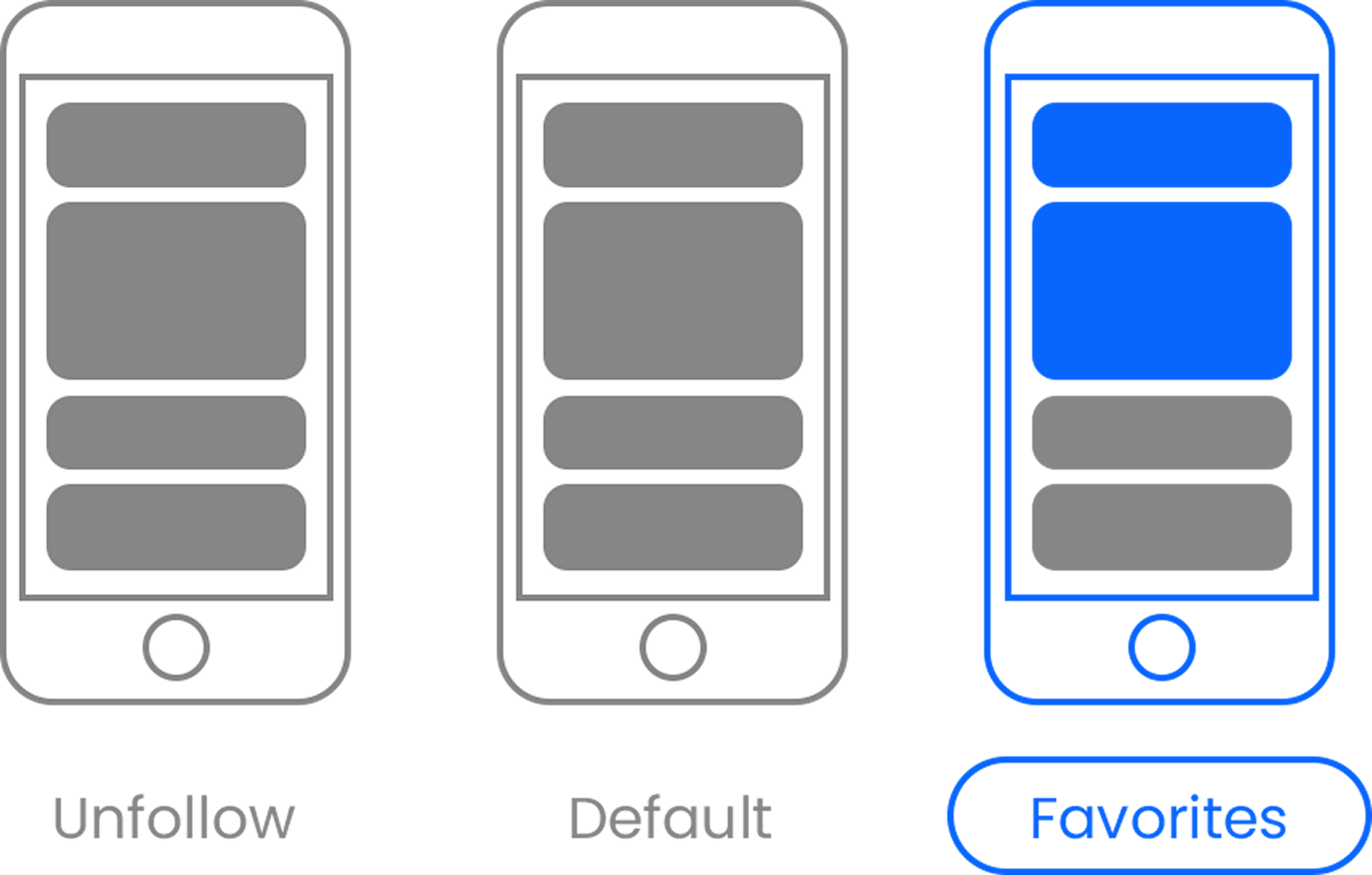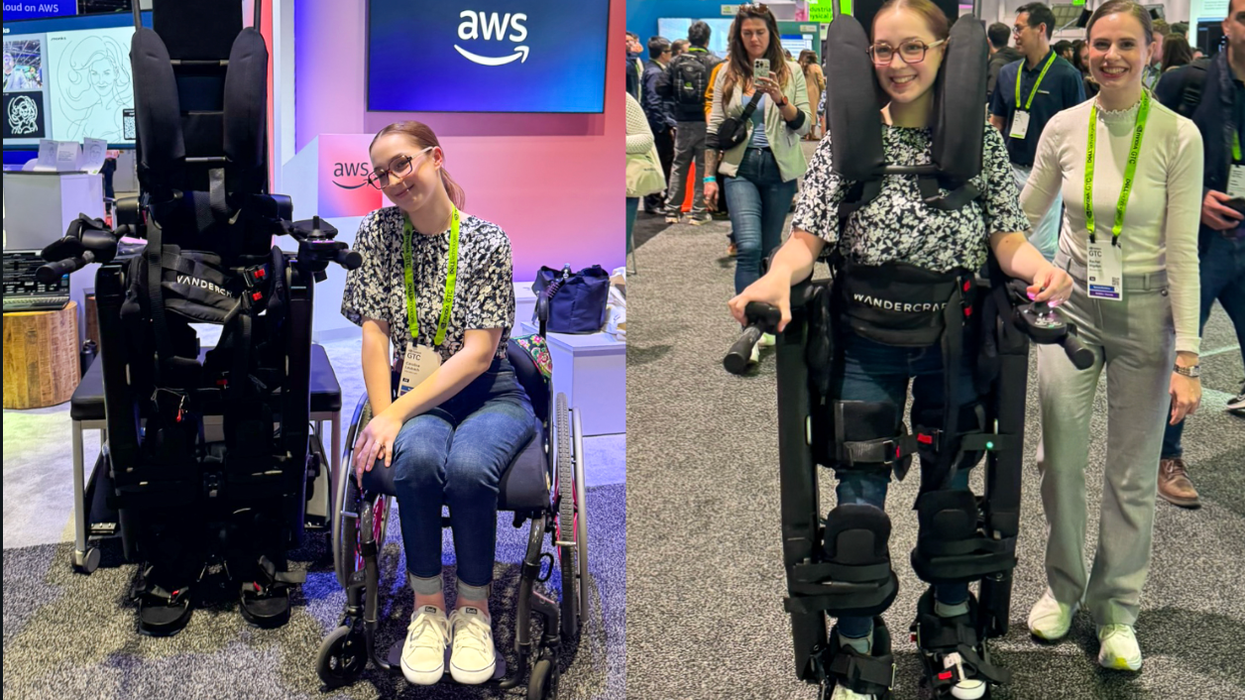To say that Caroline Laubach had a rough start to adulthood would be an understatement. Before the age of 22, she had heart failure, a spinal stroke that left her paralyzed from the waist down, a heart transplant, and beat cancer. Twice. Many consider it a miracle that she is alive, but today she can now walk, bend, and climb stairs with the push of a joystick.
Laubach was chosen as a test pilot of a first-of-its-kind, self-balancing robotic exoskeleton made by Wandercraft. By attaching herself to the Wandercraft’s prototype exoskeleton, Laubach can stand up from a seated position, walk independently, bend down to pick up items, remain standing to chat with people at eye-level, and walk up or down stairs as if she weren’t paralyzed at all. All she had to do to move was to manipulate a joystick located next to her left hand.
@wandercraft.official @Caroline Laubach is a trained Wandercraft test pilot for the Personal Exoskeleton. The device featured in this video is in the final stages of Research and Development and is not yet available for commercial use. Clinical trials have already begun in the United States, with the goal of making the device commercially available in the coming years.
A robotic exoskeleton changed her life
"It's an opportunity that I never thought I was going to have again in my life," Laubach told ABC News.
Prior to obtaining the exoskeleton, Laubach’s inspiring determination was recognized and admired by local officials and students at her college. Her grit in not letting her limitations define her and her leadership as secretary of the Disabled Students Union at Cedar Crest College in Allentown, Pennsylvania, earned her the honor of Survivor of the Year at the annual American Heart Association Heart Ball in Lehigh-Berks County.
Wandercraft has similarly put in the work with the intention of improving lives. Since its public press release in 2023, Wandercraft has been continually testing and refining its Eve exoskeleton, which is currently helping Laubach walk again. While the company is focusing on providing better mobility for immobile individuals, it is also developing other exoskeletons for patient rehabilitation and strong robots to perform physically demanding tasks.
- YouTube youtu.be
Where is all this exoskeleton technology that's been reported?
This is all well and good news, but not unheard of before. There are over a dozen similar exoskeletons already approved by the Food and Drug Administration. Every so often, we read an announcement or an article in the press about other exoskeletons, but there doesn’t seem to be much follow-up on availability or accessibility to the general public. Why is that? So far, the primary issue with them appears to be cost.
Wandercraft’s exoskeletons appear to still be mostly in the testing phase, with no outright press releases regarding the cost for public purchase. The price of an exoskeleton can vary, but the more advanced ones that are similar to Wandercraft’s Eve can easily reach around $100,000. While Medicare has begun reimbursing for the purchase of an exoskeleton for the permanently disabled, and less powerful models are available for around $40,000, it is still a significant upfront cost for the average person.
Another concern is power. The more an exoskeleton can do, the more electricity it needs from a battery or other power source. There is also concern about how a person can get up safely if they are knocked down, and what could happen if there is a malfunction.
@drsermedmezher POV: You Haven’t Walked for 10 Years Source - jesstawil on TT Exoskeleton suits—wearable robotic devices that support and enhance movement—are beginning to enter mass production, marking a major step toward wider everyday use. Once limited to research labs and rehabilitation centers, these advanced systems are now becoming more affordable, lightweight, and user-friendly, allowing them to be used in workplaces, hospitals, and even homes. For people with physical disabilities or mobility impairments, exoskeletons can offer entirely new levels of independence and freedom. They can help individuals stand, walk, or perform activities that were previously out of reach, improving both physical health and quality of life. As technology continues to evolve and production scales up, it’s likely that exoskeleton suits will soon become a common assistive tool—not just for rehabilitation, but as a practical choice for everyday mobility support. #exoskeleton #robots #tech
Compared to other methods for increasing mobility, exoskeletons are still relatively new. Developers are still creating various versions depending on a person’s mobility. It will take an investment of time and money for these companies to thoroughly test everything, so that exoskeletons reach a more desirable price point and become more feasible for the general public.
In the meantime, Laubach can walk again at a time when that seems impossible. While there are several other barriers to overcome, the hope remains that, as long as we continue to live, work, and strive as Laubach did, we will advocate for such technology, whether we need an exoskeleton or not.


















 Relaxing to music.Photo credit
Relaxing to music.Photo credit  Music and a good run.Photo credit
Music and a good run.Photo credit 
 Artist rendering of Earth with satellites traveling around it.Image via
Artist rendering of Earth with satellites traveling around it.Image via  Drawing of Leon Foucault with pendulum showing Earth's rotation.Image via
Drawing of Leon Foucault with pendulum showing Earth's rotation.Image via  The Earth rotates.
The Earth rotates. 



'Every breath you ...' what? 5 classic songs where people totally missed the meaning